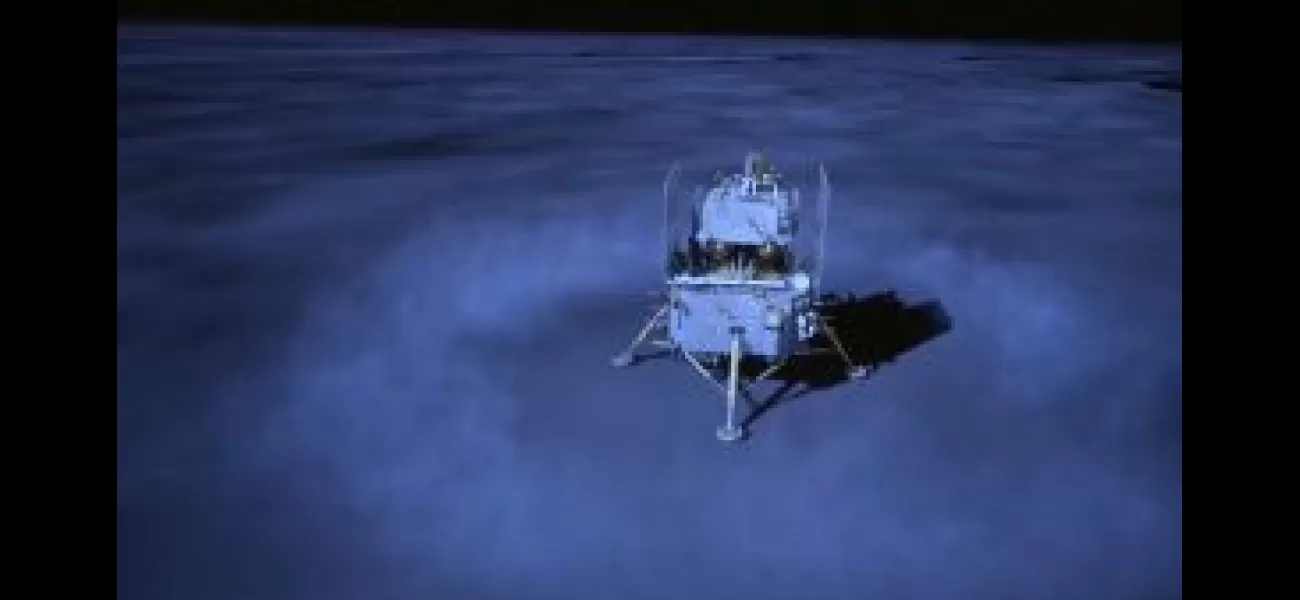China's lunar mission successfully gathers rock samples from the far side of the moon and returns to Earth.
China's Chang'e-6 probe has successfully taken off from the moon's surface with rock and soil samples from the far side, heading back to Earth.
June 4th 2024.

On Tuesday morning, the Chang'e-6 probe successfully lifted off from the far side of the moon, marking the start of its journey back to Earth. This remarkable spacecraft, launched by China last month, has been hard at work collecting rock and soil samples on the lunar surface. As reported by the China National Space Administration, the probe's ascender entered a preset orbit around the moon before taking off.
The mission has faced some unique challenges, as the far side of the moon does not directly face the Earth. This requires a relay satellite to maintain communication with the probe. Additionally, the terrain on the far side is more rugged, making it difficult to find suitable landing spots. However, the Chang'e-6 probe was able to successfully land on the South Pole-Aitken Basin, an impact crater that is over four billion years old and has a diameter of 2,500 kilometers. According to Xinhua News Agency, this crater is the oldest and largest on the moon and may provide valuable insights into its history.
One of the most exciting aspects of the Chang'e-6 mission is its goal of bringing back samples from the far side of the moon. As planned, the spacecraft has stowed the samples it collected in a container inside the ascender. This container will then be transferred to a re-entry capsule, which is expected to return to Earth in China's Inner Mongolia region on June 25th.
This mission is part of China's larger Chang'e moon exploration program, named after a Chinese moon goddess. It is the sixth mission in this program and the second designed to bring back samples, following the successful Chang'e 5 mission in 2020. China's space program has been growing rapidly, with the country already having its own space station in orbit and regularly sending crews there.
The moon exploration program is also a point of competition between China and other countries, particularly the US. While the US is still the leader in space exploration, China has made significant strides in recent years. In fact, China has set the ambitious goal of putting a person on the moon before 2030, which would make them only the second nation to do so after the US. Even NASA, who recently pushed back their target date for landing astronauts on the moon to 2026, acknowledges China's growing presence in space exploration. It's an exciting time for the future of space travel, with China and the US at the forefront of this race to the moon.
The mission has faced some unique challenges, as the far side of the moon does not directly face the Earth. This requires a relay satellite to maintain communication with the probe. Additionally, the terrain on the far side is more rugged, making it difficult to find suitable landing spots. However, the Chang'e-6 probe was able to successfully land on the South Pole-Aitken Basin, an impact crater that is over four billion years old and has a diameter of 2,500 kilometers. According to Xinhua News Agency, this crater is the oldest and largest on the moon and may provide valuable insights into its history.
One of the most exciting aspects of the Chang'e-6 mission is its goal of bringing back samples from the far side of the moon. As planned, the spacecraft has stowed the samples it collected in a container inside the ascender. This container will then be transferred to a re-entry capsule, which is expected to return to Earth in China's Inner Mongolia region on June 25th.
This mission is part of China's larger Chang'e moon exploration program, named after a Chinese moon goddess. It is the sixth mission in this program and the second designed to bring back samples, following the successful Chang'e 5 mission in 2020. China's space program has been growing rapidly, with the country already having its own space station in orbit and regularly sending crews there.
The moon exploration program is also a point of competition between China and other countries, particularly the US. While the US is still the leader in space exploration, China has made significant strides in recent years. In fact, China has set the ambitious goal of putting a person on the moon before 2030, which would make them only the second nation to do so after the US. Even NASA, who recently pushed back their target date for landing astronauts on the moon to 2026, acknowledges China's growing presence in space exploration. It's an exciting time for the future of space travel, with China and the US at the forefront of this race to the moon.
[This article has been trending online recently and has been generated with AI. Your feed is customized.]
[Generative AI is experimental.]
0
0
Submit Comment





